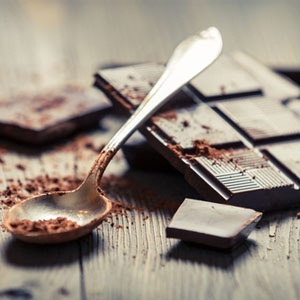Did you know – the world’s oldest box of chocolates is a 106-year-old tin of commemorative chocs made to celebrate King Edward VII’s coronation on 26 June 1902 … a treat for lovers of antiquity, but certainly not for lovers of chocolate. When it comes to chocolate, it’s not just the cocoa content that counts, but the freshness.
ALSO READ: Fudgy chocolate and Marie biscuit squares
Check out these tips on how to buy and store this indulgent treat to ensure that only the freshest chocolate melts in your mouth.
Fresh is best
Thanks to its high fat content and lack of moisture, chocolate – especially dark chocolate – generally has a long shelf-life. The best chocolate however, is fresh chocolate.
Over time, the taste will deteriorate and the texture will become brittle. Different types of chocolate stay fresher for longer. A rule of thumb is that dark chocolate can be stored for up to a year, while milk chocolate can keep for about nine months. Artisanal chocolates use fresh cream butters and fruit fillings, lowering their shelf life to 4-6 weeks.
Check the date
Before buying any chocolate – especially chocolate that’s on sale – check the best-before date. Often, chocolates on sale will be about to expire, and won’t taste anything like they did when they first left the factory.
This is good advice considering the recent flood of imported chocolates appearing on local shelves. Packed in beautiful boxes and priced to go, they may look like a great buy, but they seldom deliver a taste experience worth blowing your daily calorie count over.
Store it right
If you plan to store your chocolate instead of eat it – yes, some people do have that kind of willpower – be sure to store it right so it’s as delicious later as it is now. Heat, sunlight and strong odours are all enemies of chocolate. The perfect conditions for storing chocolate are between 15-20°C with humidity of less than 50%.
During South Africa’s long summer months, it’s a good idea to refrigerate or even freeze your chocolate. Place it in an airtight container first to prevent it absorbing odours. The fats in chocolate readily soak up strong smells; if you’re not careful, you could end up with onion-flavoured chocolate.
That bloomin’ white coating
If you do inadvertently expose your chocolate to high temperatures and then cool it, you might find that a dull white appearance has replaced the once glossy sheen. The good news is this isn’t mould.
The white film is called fat bloom or sugar bloom, and it doesn’t affect the taste of the chocolate, although it can make the texture crumbly. In high temperatures, the cocoa butter in chocolate can soften, rising to the surface to appear as a white film or “fat bloom”. Sharp changes in temperature can also lead to condensation on the chocolate; this dissolves the sugar which re-forms on the surface as tiny crystals or “sugar bloom”.
To see Food24’s collection of decadent chocolate recipes, click here.

